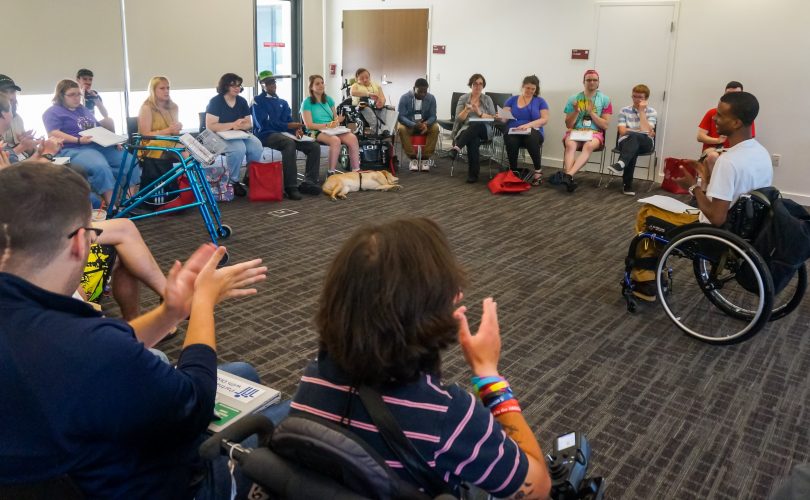When it comes to discussing and communicating with people with disabilities, some may not be aware of the ableism embedded in their language, tone, and etiquette, but we’re here to help you change that.
To begin, it is crucial to understand the difference between person-first and identity-first language. Person-first refers to placing the person before the identifier; for example, using the phrase “the boy with autism” demonstrates person-first language, whereas the phrase “the autistic boy” demonstrates identity-first language. Although some people prefer identity-first language, using person-first as a baseline is a great place to start. Typically, if someone you’re speaking with prefers identity-first language, they’ll let you know. In this case, it is important to respect their requests and move forward using their preferred language. Additionally, it’s helpful to understand why someone may prefer identity-first language. Some reasons may be that their disability is a source of pride and personal identity, or they may find it challenging to separate their identity from their disability.
When it comes to language, it’s necessary to understand that “disabled” is not a bad word. In fact, it is worse to use words such as “handicap,” “special needs,” or “challenged,” as these words are belittling and patronizing, reinforcing the stigma around disabilities. In addition, there are certain words and phrases you should avoid using, such as “normal,” “suffers,” or “handicap.” Phrases like “that’s so lame,” “what a lunatic,” and “I’m such an idiot,” are also inappropriate on the receiving end. While this may sound intimidating, it’s important to keep in mind that changing your language can be hard. But, the first step to making progress is noticing when you use these terms or phrases, and making a mental note of it.
Tone is a crucial part of language, however for those hard of hearing or who have communication-related disabilities, it can be challenging to detect tone when listening. That being said, when speaking it is important to maintain a normal volume and speed to make it easy for the listener to understand you. Increasing your volume and over-emphasizing your words can actually make it harder for someone who is hard of hearing to understand what you’re saying. Moreover, you should be careful when using sarcasm, as it is mainly portrayed through one’s tone of voice and body language, and can be easily misinterpreted.
Lastly, etiquette and body language are a huge part of communicating. Because of this, we have provided a brief set of guidelines to ensure people with disabilities are treated with dignity and respect. Some of these guidelines include:
- Ask before you provide help to someone who looks like they may need it.
- Respect confidentiality – if someone discloses their disability to you, do not share that information with anyone unless given permission by that person.
- Speak directly to the person – do not focus on their aide or translator; look at them and what they are saying or signing.
We hope these tips and suggestions can help you in your daily life to create a more inclusive community. Using these tools can make individuals with disabilities feel more comfortable and respected in their day to day life. For more information regarding language, tone, body language and etiquette, visit pyd.org. If interested in learning more, consider registering for our online trainings about inclusion, autism, and other inclusive topics. You can register for these trainings at this link: learn.pyd.org.
This blog post was written by Erika Grossi of the BU PR Lab.

